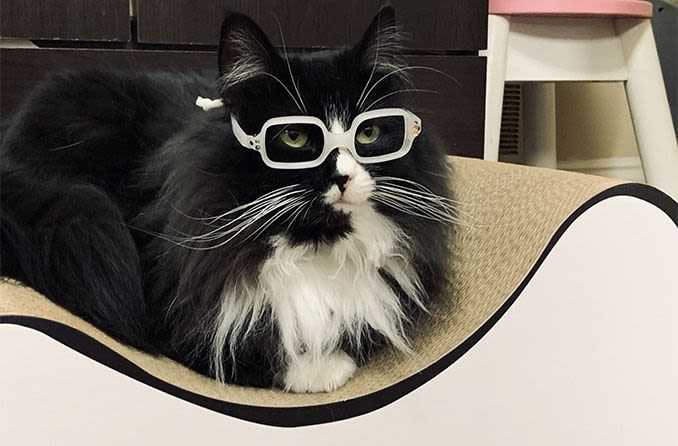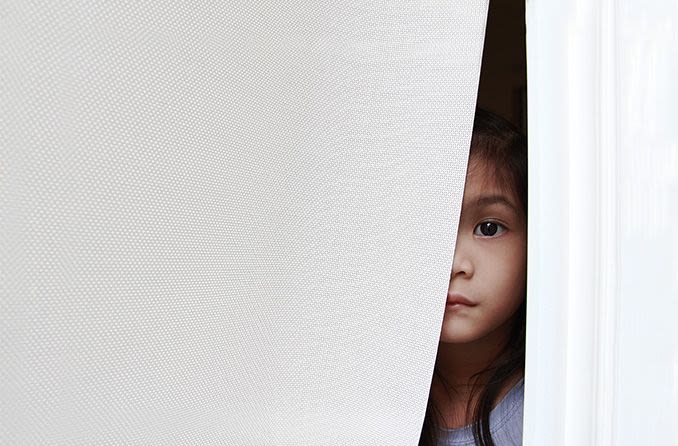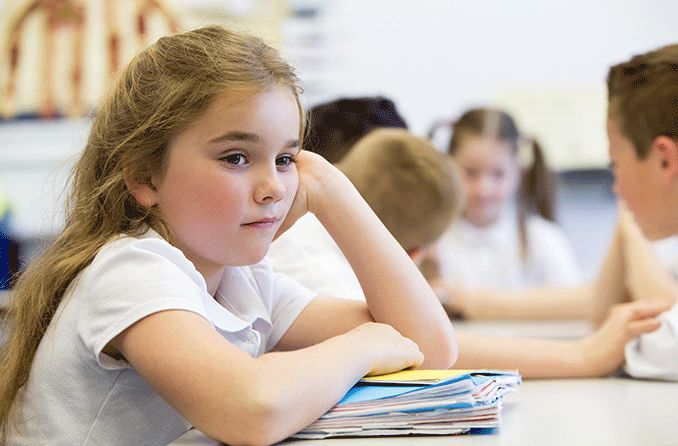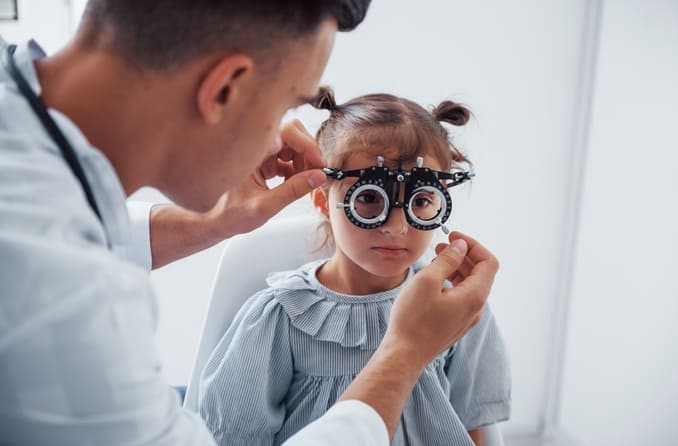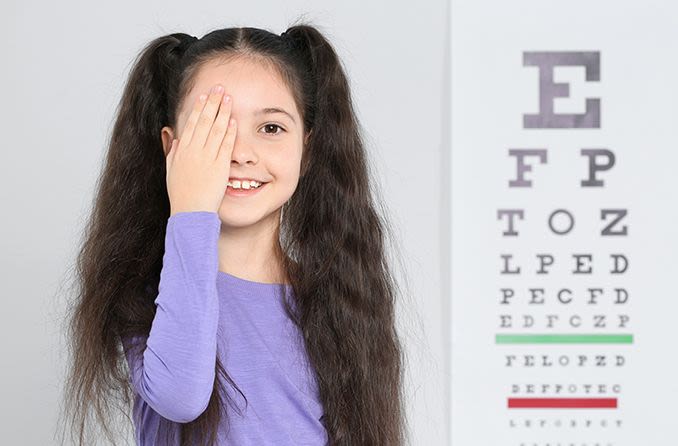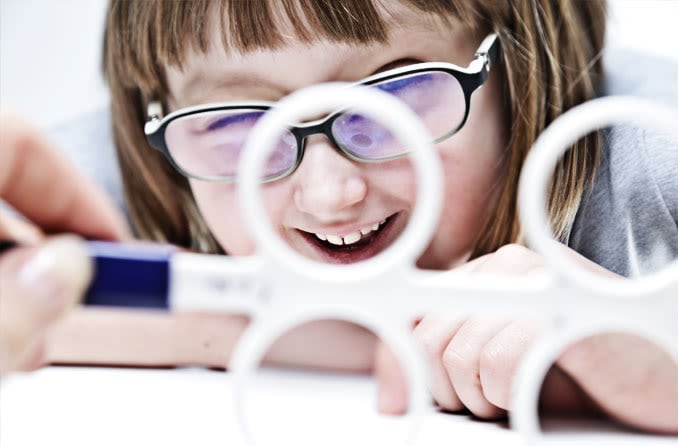If your child needs prescription eyeglasses, keeping his or her eyes safe should be your first priority. Glasses with polycarbonate lenses offer the highest degree of protection to keep your child's eyes out of harm's way while providing clear, comfortable vision.
The polycarbonate material used for eyeglass lenses was developed by the aerospace industry for use in helmet visors worn by astronauts. Today, because of its lightweight and protective features, polycarbonate is used for a wide variety of products including: motorcycle windshields, luggage, "bulletproof glass," riot shields used by police, swimming goggles and diving masks, and safety glasses.
Polycarbonate eyeglass lenses are 10 times more impact-resistant than glass or regular plastic lenses, and they exceed the FDA's impact resistance requirements by more than 40 times.
For these reasons, you can rest easy knowing your child's eyes are safe behind polycarbonate lenses.
Tough, thin, lightweight polycarbonate lenses
Polycarbonate lenses help protect your child's vision by holding up to rough-and-tumble play or sports without cracking or shattering. Many eye care practitioners insist on polycarbonate lenses for children's eyeglasses for safety reasons.
Children with amblyopia or permanent vision loss in one eye due to injury or disease should definitely wear glasses with polycarbonate lenses at all times — even if they don't require prescription lenses to see clearly — to protect the vision in their "good" eye and prevent an injury that could be potentially blinding.
Polycarbonate lenses offer other benefits as well. The material is lighter than standard plastic or glass, which makes eyeglasses with polycarbonate lenses more comfortable to wear and less likely to slide down your child's nose.
Polycarbonate lenses also are about 20 percent thinner than standard plastic or glass lenses, so they are a good choice for anyone who wants slimmer, more attractive lenses.
UV protection and blue light filtering
Glasses with polycarbonate lenses also protect your child's eyes from harmful ultraviolet (UV) radiation. The polycarbonate material is a natural UV filter, blocking over 99 percent of the sun's damaging UV rays without the need for special lens coatings. These lenses also filter some blue light.
This is particularly important for children's eyewear, because kids typically spend more time outdoors than adults. Researchers believe that up to 50 percent of a person's lifetime UV exposure takes place by age 18. And overexposure to UV rays has been associated with cataracts, macular degeneration and other eye problems later in life.
Though more research is needed to determine how much blue light is too much, it's a bonus that polycarbonate lenses filter blue light as well. A convenient, cost-effective option is polycarbonate photochromic lenses, which are clear lenses that darken automatically in response to sunlight.
Scratch-resistant and anti-reflective coatings
Though polycarbonate is an extremely impact-resistant material, polycarbonate eyeglass lenses can be easily scratched without a protective scratch-resistant coating.
Most polycarbonate eyeglass lenses come with a factory-applied, scratch-resistant coating to keep the lenses clear for as long as possible, even when worn by children. Also, polycarbonate lenses typically are sold with a warranty against scratches for a specified period of time. Ask your optician for details.
Finally, for the best appearance, vision and comfort, have anti-reflective coating applied to your child's polycarbonate lenses. Because polycarbonate is a high-index eyeglass lens material, polycarbonate lenses reflect more light than regular plastic lenses — and these reflections can be bothersome and affect vision.
Anti-reflective (AR) coating eliminates reflections off the front and back surfaces of polycarbonate lenses, giving the lenses a crystal-clear appearance and providing the best vision possible.
Gretchyn Bailey also contributed to this article.


